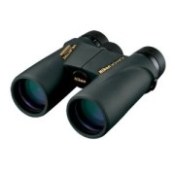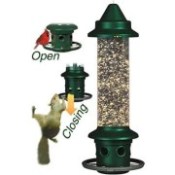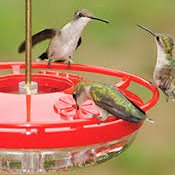
Red-tailed Hawk Subspecies
(Buteo jamaicensis)
There are 13 Red-tailed Hawk subspecies found throughout Central and North America, the Caribbean Islands and on two Pacific Island archipelago.
Three subspecies breed entirely in Canada and the U.S. (Eastern, Alaskan and Harlan's).
One subspecies breeds entirely in the U.S. (Florida).
One subspecies breeds in Canada, the U.S. and Mexico (Western).
One subspecies breeds in both the U.S. and Mexico (Fuertes).
One subspecies breeds entirely in Central Mexico (Mexican Highland).
Two Red-tailed Hawk subspecies breed on Pacific Islands belonging to Mexico (Socorro Islands and Tres Marias Islands).
Two subspecies breed on Caribbean Islands (Jamaican and Bahamian/Cuban).
Two subspecies breed in Central America and Southern Mexico (Costa Rican and "kemsiesi").
There are some references that include Krider's Red-tailed Hawk as another Red-tailed Hawk subspecies (B. j. kriderii), but others have concluded that the Krider's red-tail is a "whitish color morph the Eastern subspecies.
List of the Subspecies of Red-tailed Hawk
Jamaica (B. j. jamaicensis): This was the first described Red-tail Hawk (nominate species), hence the Latinized species name; jamaicensis. This sub-species occurs in the Northern West Indies (Jamaica, Hispaniola, and theLesser Antilles), but not in the Bahamian or Cuban Islands.
Eastern North America (B. j. borealis): The Eastern sub-species breeds from Maine and Eastern Canada to Central Canada South to Northern Florida, and West to Eastern Texas and all the Great Plains states and Provinces East of the Rocky Mountains. Birds from the Far North will migrate South for the Winter, but Southern Birds may be year round residents. This Red-tailed hawk subspecies name "borealis" translates to "Northern".
Western North America (B. j. calurus): The Western sub-species breeds from Central Alaska and Western Canada South through the Western U.S. including all the Rocky Mountain States to Northern Mexico and Baja California. Their migration patterns are similar to Eastern Birds, with most Northern birds migrating South into Mexico and some Southern birds remain as year round residents. The sub-specific name "calurus" translates to "beautiful tail".
Fuertes (B. j. fuertesi): The Fuertes sub-species breeds mainly in Oklahoma and West Texas South to Arizona and New Mexico and into Mexico. Most of these birds are year round residents. The sub-specific name "fuertesi" is named after bird illustrator and artist Louis Agassiz Fuertes.
Florida (B. j. umbrinus): The Florida sub-species breeds throughout the Florida peninsula and is resident year round. The sub-specific name "umbrinus" translates to "dark".
Harlan's (B. j. harlani): The Harlan's sub-species breeds in Alaska and North-West Canada. Most of these birds migrate South during Autumn to spend the Winter in the South-East portion of the Great Plains (mostly Kansas, Oklahoma and Texas). The sub-specific name "harlani" is named after Richard Harlan, an American naturalist and zoologist ca 1820s, also a friend of John. J. Audubon.
Bahamas/Cuba (B.j. solitudinus): This subspecies is resident in the Bahamas and the Cuban islands. The sub-specific name "solitudinus" translates to "solitary" or "alone".
Alaska/Grinnell's (B. j. alascensis): This subspecies breeds from the Southern coastal of Alaska South to the Queen Charlotte and Vancouver Islands in British Columbia. Some of these birds may be year round residents, while others appear to Winter South to Guatemala and Northern Nicaragua. The sub-specific name "alascensis" means "from Alaska".
Ridgeway/Costa Rica (B. j. costaricensis): This subspecies is a tropical resident in the highlands of Southern Nicaragua, Costa Rica and Western Panama. The sub-specific name "costaricensis" means "from Costa Rica".
Olberholser (B. j. kemsiesi): This subspecies is a tropical resident from the highlands of Chiapas, Guatemala, El Salvador, Honduras and Northern Nicaragua. The sub-specific name "kemsiesi" is named after Emerson Kemsies, the curator of the University of Cincinnati museum.
Islas Tres Marias (Tres Marias Island) (B. j. fumosus): This subspecies is an endemic resident on the Islas Tres Marias, Mexico. The sub-specific name "fumosus" translates to "smoky" or "smoke colored".
Mexican highland (B. j. hadropus): This subspecies breeds in the highlands of southern Mexico from Oaxaca and Guerrero North and West at least as far as Jalisco. This subspecies is presumed to interbreed with B. j. calurus and B. j. fuertesi in North-West Mexico. The sub-specific name "hadropus" translates to "thick footed".
Islas Socorro (Socorro Island) (B. j. socorroensis): This is an endemic subspecies resident on Socorro Island, Mexico. The sub-specific name "socorroensis" means "from or of Socorro".
More Information about Northern Goshawks, Accipiters and Other Raptors:
|
Our Favorite Bird Watching Binoculars, Squirrel-Proof Feeder & Hummingbird Feeder Read Our Reviews: |
||

Nikon Monarch M5
Best mid-priced bird watching binoculars. Waterproof, shockproof, multi-coated ED-Glass. |

|

Best Hummingbird Feeder
Drip-Free, Ant-moat, Durable, Easy to Fill and Clean. |
| Click Images or Links To View More Info | ||